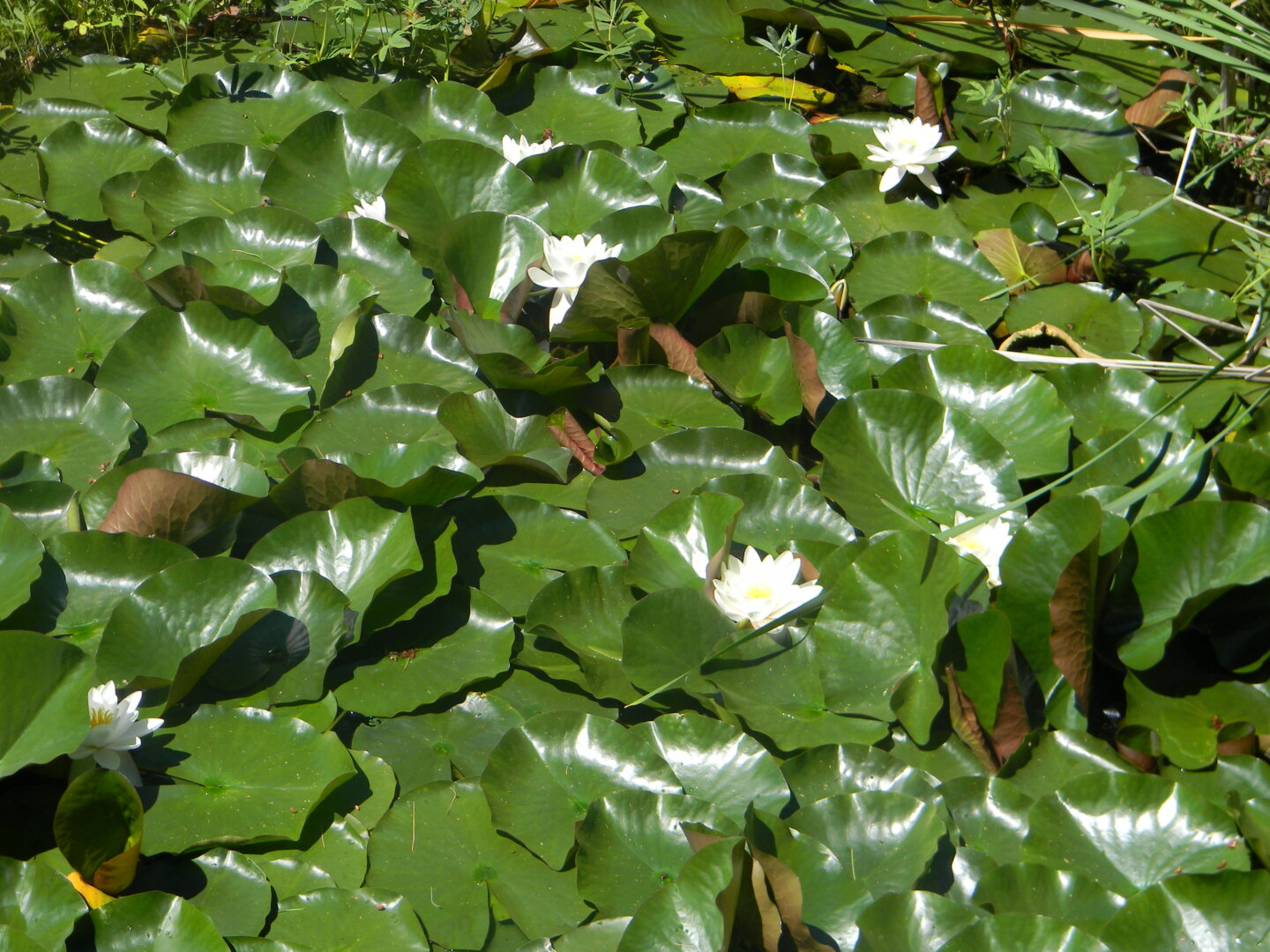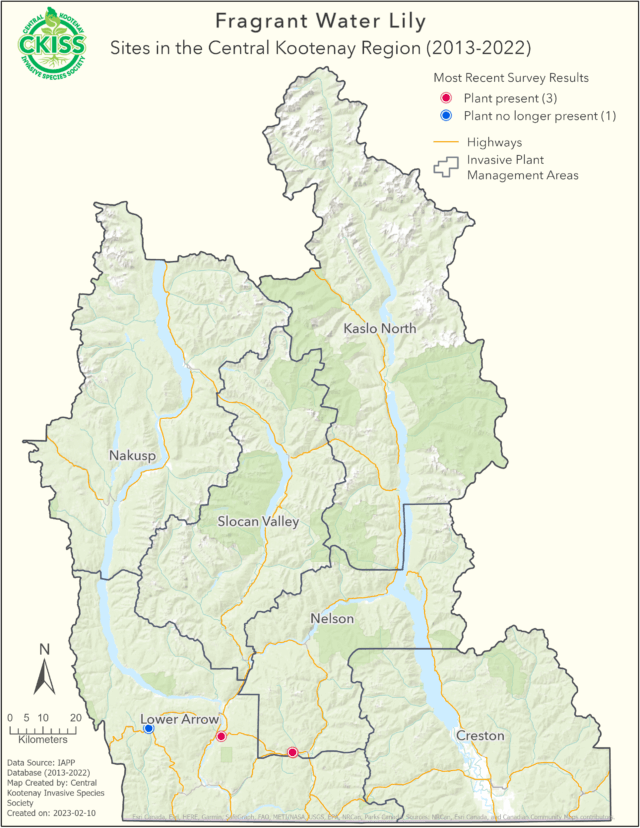Nymphaea odorata
Description
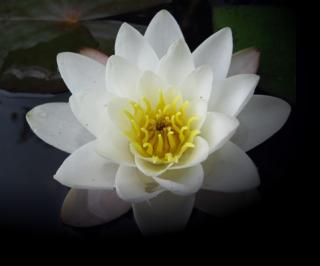
- Easily recognizable aquatic plant that can be found floating on the surface of shallow lakes, ponds and slow moving water
- Beautiful large symmetrical flower with prominent yellow stamens and many white or occasionally pink petals
- Flowers are very fragrant and appear from June to September, opening each morning & closing again each night
- Flowers are surrounded by large (25 cm across) round, smooth waxy leaves that are often purple on the lower surface
- Leaves are attached to flexible stalks attached to thick fleshy rhizomes
- Fruit is a capsule 1-2 cm in diameter and contains many seeds
- Reproduces by both seed and rhizomes
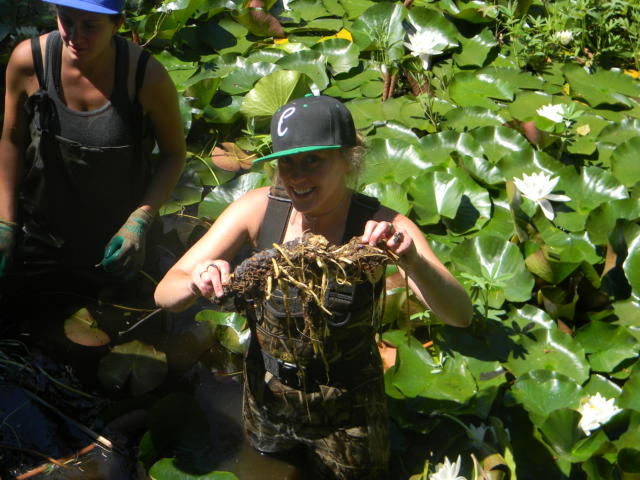
Consequences of invasion
- Shallow lakes are vulnerable to being completely covered by fragrant water lily. A planted rhizome will cover a 5 m diameter in 5 years. The fast growing aquatic plant can easily create dense infestations choking out native plants.
- Decreases the value of water front property because it can restrict lake front access if left unmanaged.
- Reduces water based recreation opportunities.
- Creates hazardous swimming, it has been attributed to some drowning incidents.

Introduction and spread
- Extremely popular water garden plant due to its beauty and it’s not difficult to grow.
- The plant can still easily be purchased at nurseries and mail order catalogs.
- People un-knowingly transplant a water lily to a friend’s property, favorite swimming hole or their own backyard.
- Pet and aquarium owners dumping/releasing their aquarium plants and animals into the wild.
- Improper disposal of garden waste.
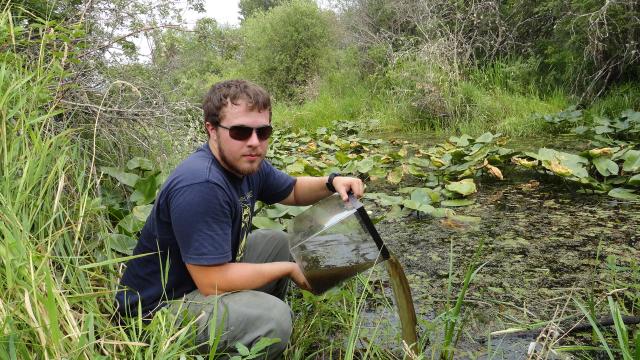
Status in the CKISS region
- Fragrant water lily is currently classified as Eradicate on the CKISS Annual Priority List.
- It has only been found in the Nelson and Lower Arrow Invasive Plant Management Areas of our region.
- Please report any findings of this species immediately.
- To learn more about how CKISS classifies and manages invasive species, see our Invasive Species Priority Lists page.
Integrated pest management options
Prevention
- Choose non-invasive or native plants for your water garden.
- Properly dispose of invasive garden waste. RDCK landfills accept invasive plants in clear plastic bags free of charge.
- Do not transplant fragrant water lily from one location to another.
- Don’t Let it Loose! Dispose of your aquarium plants in a responsible way.
Cultural
- Small infestations may be controlled by covering with a thick dark fabric that blocks out the light.
- Carbohydrate depletion, as the leaves begin to emerge during growing season faithfully removing all of them. Requires time and patience as it can take 2-3 years to kill the plants.
Mechanical
- Cutting and harvesting the plant does have some level of success if done several times a year. Removing and proper disposal of the rhizome is the key to success.
- Excavation can be successful in control of invasive water lilies. Please note that you must complete an “Application for Work in and About a Stream” prior to beginning any excavation work.
Biocontrol
- There are no effective biological control agents available for invasive water lilies.
Chemical
- Herbicides cannot be used near or in waterbodies.


